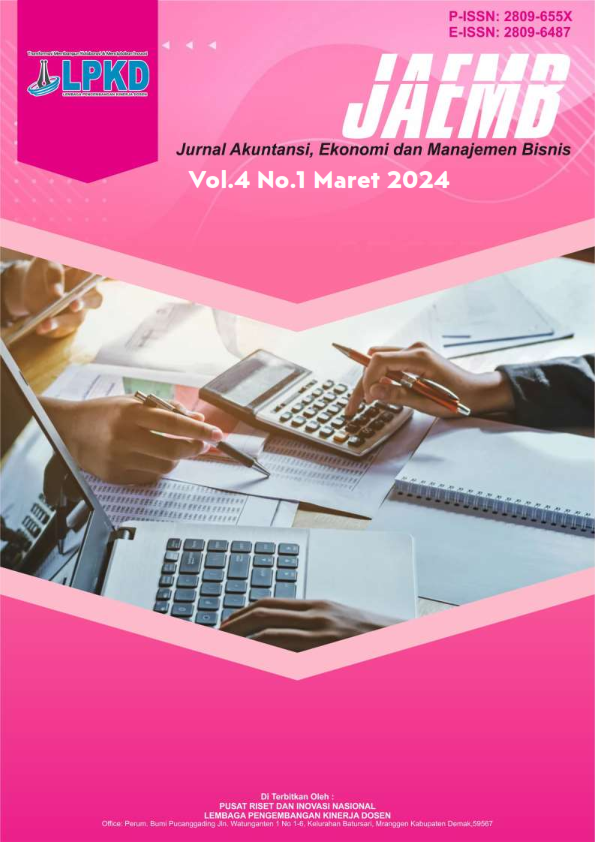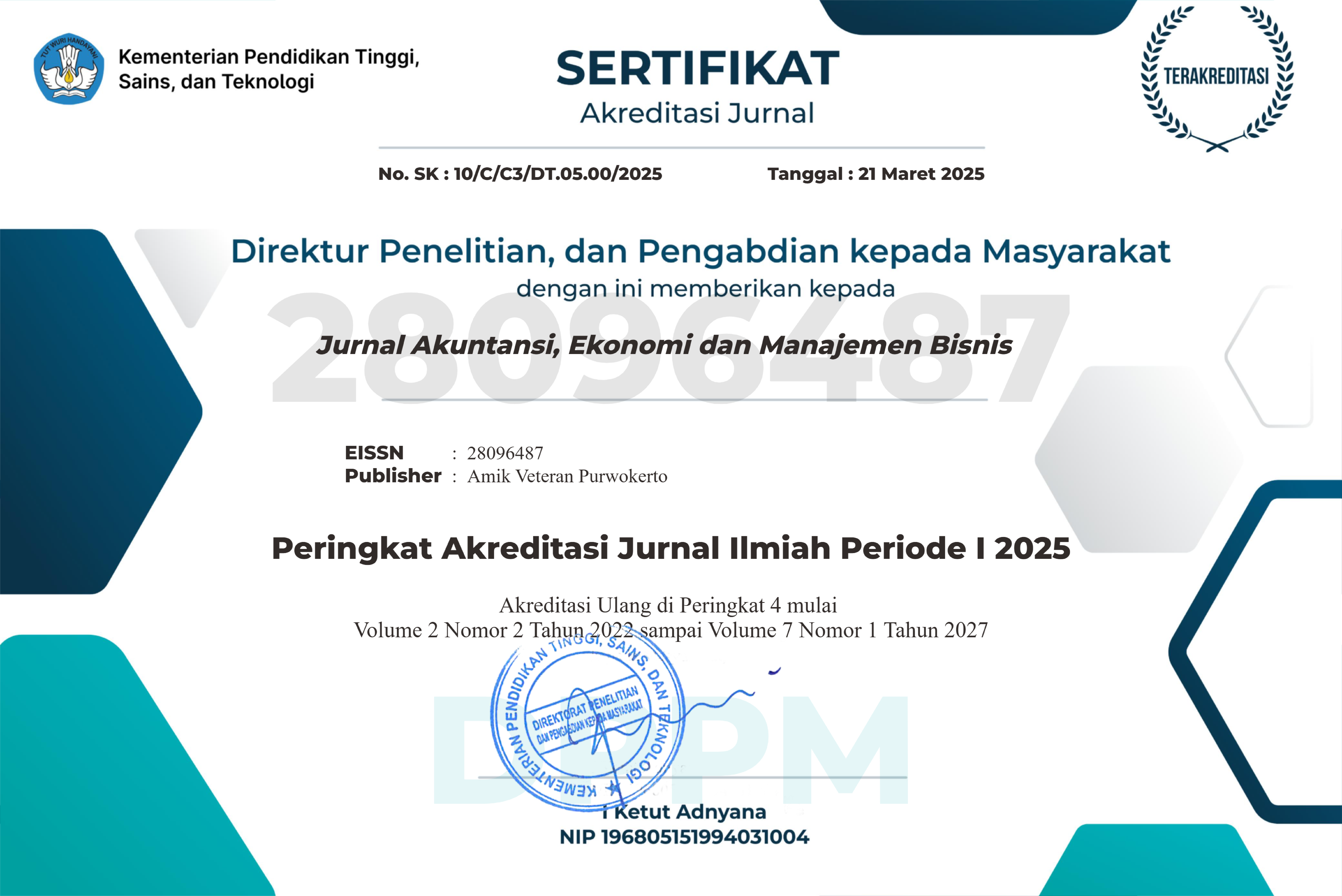Dynamic Risk Management Strategies: Adapting Financial Practices in the Face of Global Economic Uncertainty
DOI:
https://doi.org/10.55606/jaemb.v5i1.6523Keywords:
behavioral finance, social media, investor bias, financial influencers, sentiment analysisAbstract
Multinational corporations operating in high volatility industries are increasingly exposed to global economic disruptions, making financial stability a critical strategic priority. Despite the adoption of Dynamic Risk Management (DRM) strategies to address such challenges, the impact of DRM on financial performance remains insufficiently understood, especially under extreme macroeconomic uncertainty. This study aims to explore how DRM contributes to financial performance and how this relationship is moderated by Global Economic Uncertainty (GEU). Using a qualitative exploratory case study design, data were gathered through semi structured interviews with finance and risk executives from firms in the energy, manufacturing, and technology sectors, supported by analysis of internal documents and risk reports. Thematic analysis revealed that DRM practices such as real time monitoring, dynamic hedging, and predictive analytics are essential in stabilizing liquidity, profitability, and operational continuity. However, their effectiveness is contingent upon firms’ strategic adaptability and the severity of external economic shocks. The conceptual model developed positions GEU as a critical moderating variable and emphasizes the role of agile governance and scenario planning in enhancing DRM outcomes. These findings synthesize the theoretical and practical link between DRM and financial performance, suggesting that firms must go beyond technical risk tools and embed strategic agility into their risk governance frameworks. The study contributes to the literature by integrating financial resilience, adaptive capability, and external uncertainty into a unified analytical framework, offering practical insights for corporate leaders in turbulent economic environments.
References
M. Mikes and R. S. Kaplan, “Towards a contingency theory of enterprise risk management,” Accounting, Organizations and Society, vol. 92, p. 101244, 2021, doi:10.1016/j.aos.2021.101244.
N. Gatzert and M. Martin, “The impact of enterprise risk management on firm value: A meta analytic review,” Journal of Risk and Financial Management, vol. 15, no. 3, p. 125, 2022, doi:10.3390/jrfm15030125.
P. Hopkin, Fundamentals of Risk Management, 6th ed. London: Kogan Page, 2023.
N. N. Taleb and M. Blyth, “Antifragility in financial systems,” Risk Analysis, vol. 41, no. 1, pp. 33–47, 2021, doi:10.1111/risa.13556.
E. Ernst & Young, Global Risk Survey Report 2024. London: EY, 2024.
S. Saunders, P. Lewis, and A. Thornhill, Research Methods for Business Students, 9th ed. Pearson, 2022.
J. W. Creswell and C. N. Poth, Qualitative Inquiry and Research Design, 4th ed. Sage, 2021.
L. S. Nowell, J. M. Norris, D. E. White, and N. J. Moules, “Thematic analysis: Striving to meet the trustworthiness criteria,” Inter-national Journal of Qualitative Methods, vol. 16, no. 1, pp. 1–13, 2017, doi:10.1177/1609406917733847.
Y. S. Lincoln and E. G. Guba, Naturalistic Inquiry. Sage, 2020.
A.M. Fernandez and A. J. West, “Contextualizing risk management: A multi-level analysis of DRM systems in energy firms,” in Proc. IEEE Int. Conf. Risk Anal. Manag. (ICRAM), 2022, pp. 55–62, doi:10.1109/ICRAM.2022.00012.
A.Lee, C. Park, and J. Park, “Predictive analytics for strategic risk mitigation: Evidence from Korean manufacturing firms,” Journal of Business Research, vol. 142, pp. 123–133, 2022, doi:10.1016/j.jbusres.2021.11.035.
R. Davis and M. Wong, “Scenario planning in finance: A review and research agenda,” Finance Research Letters, vol. 47, p. 102749, 2022, doi:10.1016/j.frl.2021.102749.
F. Zhang, L. Tian, and H. Khong, “Agility and resilience: How strategic governance affects financial outcomes under uncertainty,” Global Policy, vol. 13, no. 2, pp. 203–218, 2022, doi:10.1111/1758-5899.12940.
K. Patel, M. Singh, and L. Kumar, “Real time hedging and firm performance during macro shocks,” International Review of Financial Analysis, vol. 77, p. 101896, 2021, doi:10.1016/j.irfa.2021.101896.
S. Ahmed and A. Gupta, “Crisis driven financial adaptability: The role of board oversight,” Corporate Governance, vol. 30, no. 2, pp. 87–103, 2022, doi:10.1111/corg.12451.
T. Walker and B. Davis, “Cash flow volatility and adaptive risk systems in ASEAN banks,” Asian Journal of Finance, vol. 14, no. 4, pp. 355–369, 2023, doi:10.1108/AJF-02-2023-0034.
J. Chen, Y. Li, and X. Zhou, “Integrating AI in DRM: A systematic literature review,” Expert Systems with Applications, vol. 212, p. 118562, 2023, doi:10.1016/j.eswa.2022.118562.
D. Miller and R. Cole, “Long term effects of risk adaptation frameworks in technology firms,” in Proc. Int. Conf. Manage. (ICM), 2021, pp. 142–150, doi:10.1109/ICM.2021.00421.
V. Singh and P. Rao, “Financial performance under uncertainty: A comparative study of agile versus traditional firms,” Journal of Contingencies and Crisis Management, vol. 31, no. 1, pp. 14–28, 2023, doi:10.1111/1468-5973.12495.
K. Brown, L. White, and S. Clark, “Triangulation in qualitative finance research: Methodological advances,” Journal of Qualitative Financial Analysis, vol. 9, no. 2, pp. 45–60, 2022, doi:10.1016/j.jqfa.2021.06.002.
J. Elias and M. Mansour, “Governance structures and financial survival post COVID 19,” Corporate Finance Review, vol. 27, no. 3, pp. 31–47, 2022, doi:10.1111/cfr.12310.
A.Fernandez et al., “The moderating effect of macro risk on DRM Performance linkages,” European Journal of Operational Research, vol. 315, no. 1, pp. 200–213, 2023, doi:10.1016/j.ejor.2022.10.032.
Downloads
Published
How to Cite
Issue
Section
License
Copyright (c) 2025 Jurnal Akuntansi, Ekonomi dan Manajemen Bisnis

This work is licensed under a Creative Commons Attribution-ShareAlike 4.0 International License.








